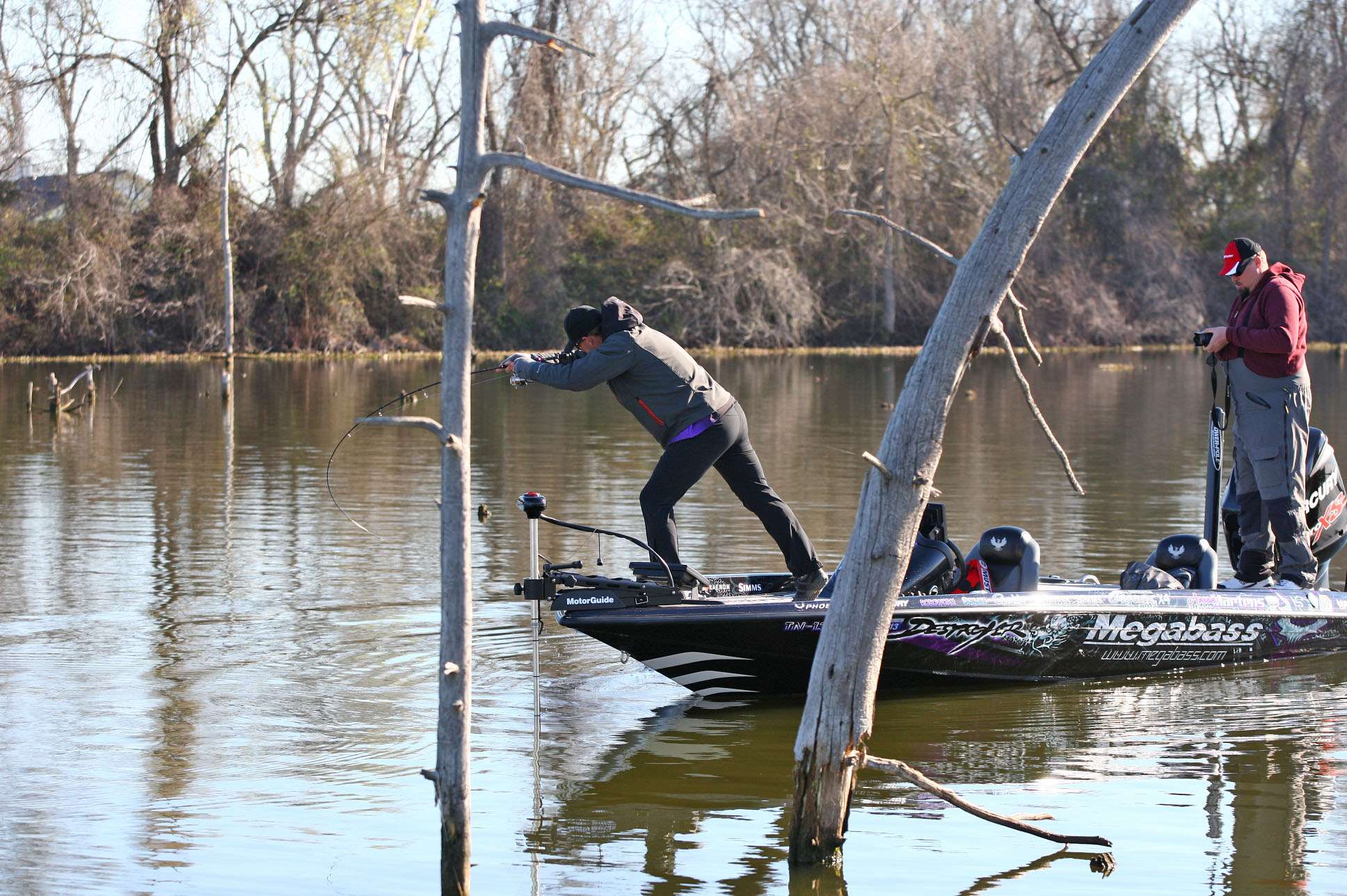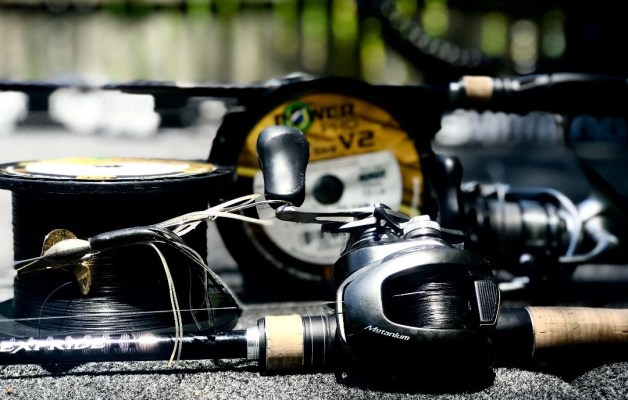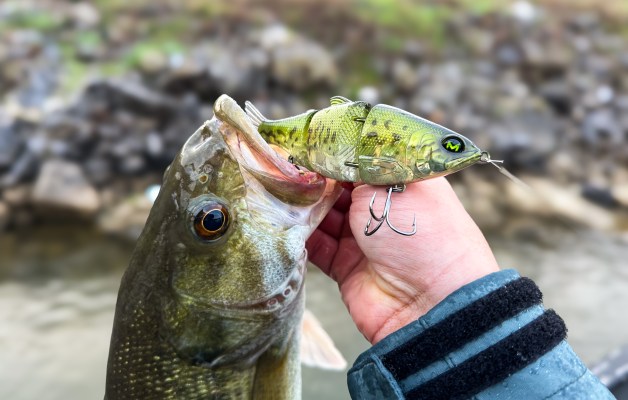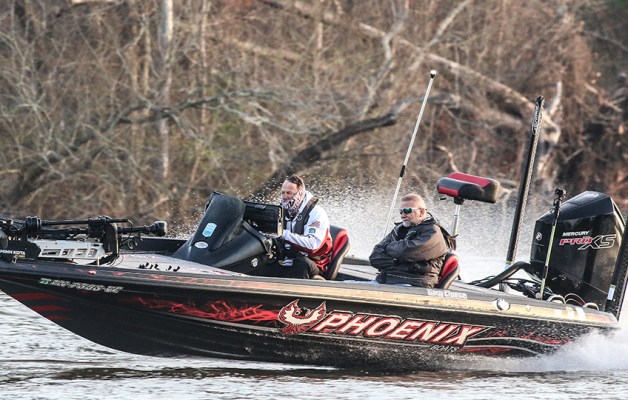
SHREVEPORT-BOSSIER CITY, La. — Muddy water, big fish and stout tackle are the presumed recipe for a Red River victory but a number of contenders for the 2012 Bassmaster Classic championship are hoping to turn that alleged truism on its ear.
When Skeet Reese won here in 2009, he utilized traditional power techniques, primarily a spinnerbait and a soft plastic craw, fished on 50-pound braided line and 25-pound fluorocarbon, respectively. While the majority of the field this week may ride those tackle coattails, whether by design or otherwise, a handful have defied conventional wisdom and employed spinning tackle in their quest for the title.
The use of spinning tackle to win a Classic is not unprecedented, but it’s atypical. Kevin VanDam employed spinning tackle to take his third Classic trophy in 2005, but that tournament was held on Pittsburgh’s stingy Three Rivers, where his 12-15 catch over three days would have had him in 19th place after the first day of this week’s event.
Similarly, Woo Daves used spinning tackle to win in 2000, but that year’s Classic was held on Lake Michigan, where zebra mussels had filtered the ultra-clear water and Daves’ targeted quarry was smallmouths, not backwater largemouths.
The Red River is a different animal altogether. Or is it?
While the Red may flow fast and muddy, a key element for many anglers who’ve had success this week has been comparatively clear water. Most of the best backwaters are crowded, too, so that puts a double whammy on skittish pre-spawn and spawning largemouths.
While there are still meat stick holdouts, most of the top anglers on the Elite Series have integrated spinning tackle into their tournament arsenal to some degree. For example, Edwin Evers, currently in fifth place just over 5 pounds out of the lead, is a noted power fisherman, but he’s also a skilled sight fisherman. That’s been his dominant technique this week. Today one of his bigger fish came on 8-pound. test line.
“You’d like to have them on 25-pound line, but there wasn’t anything for her to get hung on,” he said.
Perhaps the most noted spinning tackle devotee among all pro anglers is Aaron Martens, who grew up fishing the deep clear waters of California for highly-pressured bass. This week he’s dropshotted up consecutive limits totaling 29-09 that have him in eighth place, just under 6 pounds off the lead. He reported using nothing lighter than 16-pound line in practice, but has gone down to 8-pound Sunline Sniper fluorocarbon to entice strikes in the heavily pressured McDade backwater.
“It’s scary but you can get them (in the boat),” he said. “I’ve fished light line my whole life.”
Today he lost a fish he estimated at 6 pounds that came unbuttoned on the way to the boat. He went back to her twice but could not lure the fish to bite again. That missed opportunity may have cost him an opportunity to contend for the victory tomorrow.
Ott Defoe (15th place) may be a Classic rookie, but he too had the foresight to integrate spinning tackle into his game plan.
“The one time I was here before in February, the only way I could get bit was to finesse them,” he said. He’s throwing a variety of Rapala lures, including the Shad Rap, which he called the ultimate cold water crankbait. “It has a subtle natural action, not too much, just enough.”
He’s throwing it on 8-pound line and while he said that the specter of losing a big fish on light line could haunt him, success is ultimately a function of patience. “You just have to take your time,” he said. “If they go around a stump you have to follow them around it.”
Martens and DeFoe are sharing the same ultra-productive and highly-pressured backwater, as is Fred Roumbanis, who watched Martens put on a clinic.
“I watched the Aaron Martens show at close range and it wasn’t fun,” Roumbanis lamented. “I didn’t bring light enough line. I was dropshotting in practice but I was using 12-pound line, which is more like flipshotting. Those fish are pressured so they’re smart, but Aaron was smarter.”
Some anglers met the switch to finesse halfway. Alabama’s Gerald Swindle transitioned from power plastics and jigs to a Zoom Magnum Finesse worm and landed a 4-pounder and a 6-pounder on it. While the bait was small, he couldn’t give up his beefy rod, reel and line, pairing baitcasting tackle with 20-pound fluorocarbon.
“If you throw smaller stuff, the fish seem to respond,” he explained. “But when I got a bite on it, it was a big one.”
Swindle only caught four fish, though. Martens hopes that other anglers – like Swindle and Roumbanis – never come to love spinning rods as much as he does.
“I hope they don’t learn from me,” he said. “I hope they stay the way they are.”
But can finesse tactics lead to victory on a traditional power fishery?
“When I won on the Delta, I caught an 11-pounder on 6-pound line,” he said.
That’s should be proof enough that it’s possible. Whether he’ll be able to ride big fish and light line to victory this week will be determined tomorrow.





